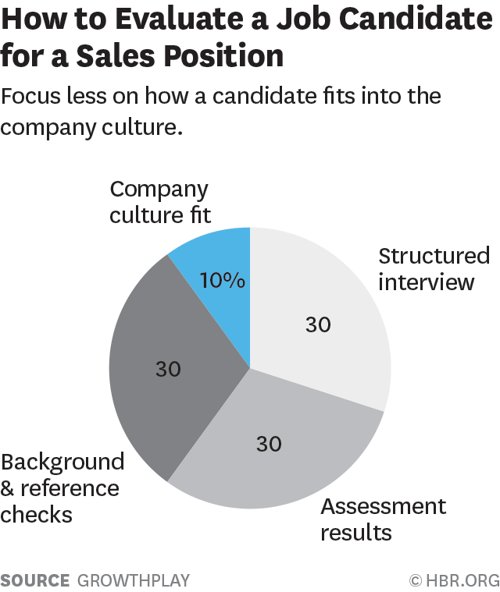August 21, 2023
 by Boris Mustapic / August 21, 2023
by Boris Mustapic / August 21, 2023

As a sales leader, driving sales performance is a daily concern.
With changing economy and competition growing by the day, sales and revenue managers want to improve sales team productivity, streamline the sales process, and deliver on their goals.
However, finding the time, resources, and trustworthy advice to chart your path forward can be difficult. You can’t do everything, of course, but you can do some things.
This post looks at the most common sales challenges and trends and some actionable steps to boost sales performance.
Sales performance measures and evaluates how well a sales team or sales rep achieves their goals. It determines how effectively and efficiently a sales process generates revenue and drives business growth.
To improve sales performance, you obviously need a good sales performance management software but also strategic planning, skill development, effective management, and continuous improvement. Here are some steps and strategies to take note of.
It's worth checking with your sales team "What's their top priority?"
If they cannot provide a clear answer, or it doesn't align with your business goals, you need to spend more time setting and communicating clear goals.
Your sales team can't perform optimally if they don't know what to focus on. The best goals are ambitious but also attainable, motivating but within reach. They’re specific and clear enough to avoid confusion and misunderstandings in your sales process.
Look at your sales team’s current performance to determine if their goals are accurate and achievable. When 10 to 20% of salespeople miss goals, their performance is a key concern. But when most salespeople miss, the problem lies in your goals.
When goals aren’t possible, your reps feel deflated as they prepare to report progress. They might even feel like they’re set up to fail.
On the other hand, if your sales goals are too easy, there’s no motivation or urgency to take the extra steps and close deals. Every salesperson is different and has unique motivators, but most share the goal-oriented mindset that got them into sales in the first place.
Make sure you’re nurturing that side by being as clear and strategic as possible.
If you’re not sure how best to modify or set up your goals for success, here are a few examples to compare against:
Have a good mix of different business goals but avoid setting too many goals or doing everything at once. Your goals should support your organization’s vision and ability to track leading and lagging indicators.
Sales are dynamic. Your sales process needs to adapt to the ever-changing customer needs and sales landscape.
New technology, deeper customer insights, evolving buying journeys, and shifting economic conditions will make you constantly reevaluate your sales processes to meet changing demands.
“With the sheer number of competitors offering any specific SaaS solution, running a strong sales process is more important than ever.”
Jayme Manos
HubSpot Sales Manager
Manos continues, "When sales reps push for a close, without having executive buy-in and a clear ROI, more deals will be lost to 'no decision,' and timelines will push."
That doesn’t mean completely overhauling but optimizing your sales operations. An optimized, clearly defined sales process is a roadmap for reps to consistently close deals. It speeds up onboarding and training new hires. A well-documented sales process that anyone can reference anytime comes in handy.
When designing your sales process, determine who is accountable for each step (owner) and who provides input (stakeholder). At what milestones and checkpoints do sales reps receive input and feedback from leaders? Be sure to observe these and their frequency.
Even if you don't currently have a set process, there are likely steps your employees are already taking. Discover the key milestones and commonalities by gathering data from your team members.
Once you have your process outlined, look for gaps and bottlenecks. Here are some questions to ask:
Pick a few areas to act on quickly. Don’t forget to explore time-consuming but high-impact improvement areas too. If you only make the fastest changes, you might miss other opportunities. Below are some action items to include in your sales process.
Content is a powerful, yet often underutilized, tool for driving sales (and marketing!) results. Suppose your company hasn't clearly defined your customer journey and hasn't created content to support each stage. You could miss out on opportunities to improve sales performance.
Competitors move fast and won’t miss a chance to create sales content that speaks to your customers. You need to stay a step ahead.
Equip your sales reps with empowering content to close deals and provide prospects with useful, on-brand information. In an ideal world, your marketing team collaborates with your sales team, and knowledge is shared freely. When these teams work in silos, chaos ensues, so align them well.
Create an extensive library of educational, transactional, and loyalty-building content to support the sales cycle. Here are some examples of sales enablement content types.
This process isn't always linear, and the steps can differ based on your customer’s needs.
Here’s a good starter list:
Your content should also be easy to access and share. The best case study or whitepaper can’t help your sales performance unless it reaches prospects.
Many proponents of sales automation will tell you to automate as much as you can. So much of the workday is spent on non-selling activities. Every non-selling activity is time you can spend with a prospect or actively reach out to a new one.
Think manually entering CRM data and managing back-and-forth appointment calls, routing leads, and scheduling internal meetings – time-consuming and hectic.
Many sales automation software and tools can streamline sales operations and save time instead.
This is far from the complete list of sales automation options, but a glimpse of what's possible.
Rush hiring or not taking the time to understand sales reps’ experience and approach can harm your sales performance.
A BrightHire survey found that a single account manager mis-hire can cost a company $100,000, not to mention the time spent onboarding and training them.
Unfortunately, you’re up against high turnover simply due to the nature of the sales industry, with annual sales turnover estimated at 25% to 30%. Consider these simple measures to avoid hiring mistakes and frequent attrition.
Evaluating candidates comes down to various factors, not just whether or not they’re a good culture fit. HBR created this chart to show the impact of observing your prospect's behavior and other considerations.

Source: Harvard Business Review
When in doubt, be more thorough about what a candidate can contribute. Ask them specifically about common sales scenarios your company sees every day. You’ll learn more about how well they handle sales calls and take swift action.
Learnings never end. Sales reps require constant coaching and training as consumer behaviors shift, spending ebbs and flows, and new competitors enter. Without a mentoring relationship or planned coaching, you can’t really improve your sales reps’ performance.
Salespeople who don't have continuous learnings or training opportunities can feel stuck. Everyone on your team strives for the same thing: growth. Sharing insights and lessons learned can empower everyone involved and open your team up to new ideas.
How to begin coaching your sales team:
You can only improve what you measure. If you don’t track key performance indicators (KPIs), how would you know if your sales efforts are making an impact?
To improve sales performance, track these three key sales metrics:
Tracking the right metrics helps avoid delving into superficial metrics or analytics that don't tell you anything about your sales’ health. Stay focused. Don't feel compelled to follow absolutely everything there is.
Here’s a quick recap of how to improve your sales performance and put the ideas into practice:
Don't know where to start? Pick one of these steps with the greatest impact, which would help you see results faster. What can you do today to move your sales team in the right direction? Do that first. Then refine, refine, refine.
Involve your sales team at every step. Ask for input and feedback along the way. Simply asking, "What works?" and "What could be better?" can do wonders for your sales performance.
Help your sales team close deals efficiently. Learn how sales enablement can make selling easier.
Boris Mustapic is the Head of Content at Weflow, a sales performance & intelligence platform designed to help sales and revenue teams close more deals, drive process adherence, and improve sales forecasting accuracy.
Imagine you’re tasked with implementing a complex new CRM tool designed to transform your...
 by Jennifer Clark
by Jennifer Clark
The learning curve in our digital world can be steep, with constant changes and innovations...
 by Hartmut Hahn
by Hartmut Hahn
Most organizations rely on sophisticated customer relationship management (CRM) tools to...
 by Disha Gupta
by Disha Gupta
Imagine you’re tasked with implementing a complex new CRM tool designed to transform your...
 by Jennifer Clark
by Jennifer Clark
The learning curve in our digital world can be steep, with constant changes and innovations...
 by Hartmut Hahn
by Hartmut Hahn


